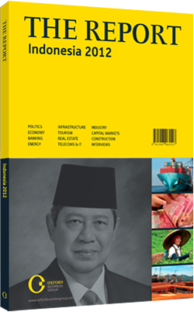Managing downside: The rate of loan defaults declines as bankers grow more cautious
The local banking sector has undergone many improvements since the 1997-98 Asian financial crisis. Risks are now being more carefully managed at the regulatory and individual bank levels, with strong incentives to manage credit portfolio losses. Perhaps as a result of these changes, the ratio of non-performing loans (NPLs) has declined over the last few years, although banks with high exposure to small business loans have continued to face higher ratios.
LONG-TERM TREND: Data from Bank Indonesia (BI) released in September 2011 showed that overall, the NPL ratio for the banking sector had declined from 2.98% in June 2010 to 2.74% in June 2011. This drop is part of a longer-term trend, with BI figures showing a general decline in the NPL ratio over the last five years, from 6.07% at the end of 2006, to 4.07% a year later, then 3.2% in 2008 and 3.31% in 2009.
The big achievers in the 2010-11 period were the foreign banks, whose average NPL ratio fell 217 basis points for the year ending June 2011, to 3.1%, while joint venture banks saw this ratio fall by 60 basis points to 2.34%. This figure for private foreign exchange commercial banks declined by 43 basis points to a ratio of 2.35%, year-on-year, and private non-foreign exchange banks saw a 29 basis point drop to 2.29% for the same period.
POSSIBLE REASONS: Behind these encouraging results lies a combination of new bank strategies and the general economic climate. With GDP growth exceeding 6% for 2010 and like to do so again in 2011, per capita incomes are rising and business revenues are expanding. Unemployment during the final months of 2011 was also at a 10-year low, at 6.3%, meaning that more Indonesians are in a position to repay their outstanding debts. At the same time, BI has maintained a relatively stable interest rate during the year, keeping debt servicing costs down.
At the same time, some lenders have restructured their NPL portfolios. Many banks, including those that are owned by the state, have been writing off NPLs, shouldering the burden of the extra operating expense. Bank Negara Indonesia (BNI), for example, wrote off 0.4% of its total loan portfolio during the first half of 2011, while also auctioning off the collateral of some bad debtors. This brought the bank’s gross NPL ratio down from 4.27% at the end of 2010 to 3.64% in June 2011.
The sector has also improved its asset recovery level, with the recovery ratio against write-offs rising from 21% in 2008 to 37% in 2010. Another sign of improving risk management was a rise in the sector-wide pre-provision operating profit ratio, which increased from 0.7 in 2008 to 3 in 2010.
SMALL BUSINESS LOANS: Banks have also taken a tougher view on loan applications, to keep new NPLs from adding to the burden. This is largely coming at the expense of loans to the micro, small and medium-sized enterprise (MSME) segment, where the NPL ratio is higher than the sector average.
Indeed, BI figures show the MSME segment had an average NPL of 2.87% as of June 2011. The NPL ratio for this segment was highest at the joint venture and foreign-owned banks, at 3.63%, followed by state lenders, at 3.59%. Regional development banks meanwhile recorded a NPL ratio of 2.2% for the MSME segment, while this figure reached 2.4% for foreign exchange commercial banks. At rural banks, which focus on loans to MSMEs, the overall NPL ratio amounted to 6.21% as of June 2011.
Behind this poor performance are a variety of factors, from fraud to natural disasters. The higher NPL ratio for MSMEs has also played into higher interest rates for this type of loan. BI has been urging banks to cut these rates by reducing overheads, via methods such as sharing infrastructure with other banks and taking advantage of a regional credit guarantee programme. Meanwhile, the decline in overall NPLs has freed up resources to place into more productive areas. The result has been a healthier system, further underpinning recent economic growth.
You have reached the limit of premium articles you can view for free.
Choose from the options below to purchase print or digital editions of our Reports. You can also purchase a website subscription giving you unlimited access to all of our Reports online for 12 months.
If you have already purchased this Report or have a website subscription, please login to continue.

